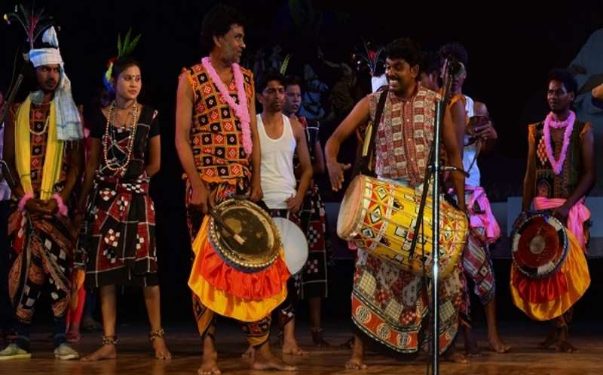Jamtikra: Traditions evolve over the years as those are passed on to the posterity over time through a socialisation process. However, we have left behind the traditional ‘Nachniyan’ folk-dance form of western Odisha, in our march towards modernity.
According to reports, Nachniyan folk-dance was traditionally being performed in auspicious occasions like marriages, thread ceremonies, social functions, cultural programmes and religious festivals.
In ‘Nachniyan’ folk-dance form, performing artistes dance in rhythm with musical instruments like Dhol, Nisan, Tasha and Mahuri, along with singing Chaupadis and other folk-songs, the report said.
Two to four artistes usually participate in this group dance and one person recites as others repeat the folk-songs. Fascinated by the enthralling performance, local villagers gather around to enjoy. Head of the Nachniyan troup who recites is called as Siri Gayak and other members who repeat his songs are called Palia.
The style of the attire worn by Nachniyan artistes is also typical. Usually, they wear coloured clothes with multiple folds around their waists, specially designed loose Kurtas decorated with Jaree works, Pagdis on their heads studded with peacock feathers.
These performing artists put on Kundals on ears, Bahutis on hands, Malas around necks, Ghungurs on legs and rings on fingers. Their faces are decorated with Sindur and Chandan, feet with ‘Alta’ and eyes with Kajal. They hold Chamar on left hand and a handkerchief on the right while performing during several occasions.
However, this traditional folk-dance form has become obsolete these days and people prefer loud DJ music instead, played and performed by the band parties. Attabira area of Bargarh district in western Odisha was quite popular in the region for Nachniyan dancers.
Notably, this traditional folk-dance form has vanished from society here for the past three to four decades. The artistes who were then performing on-demand, for marginal remuneration, have switched over to other occupations to eke out a living.
While it is commonly assumed that traditions have linkage with ancient history, many traditions have been invented by human societies on purpose whether that is social, political, economic or cultural.







































